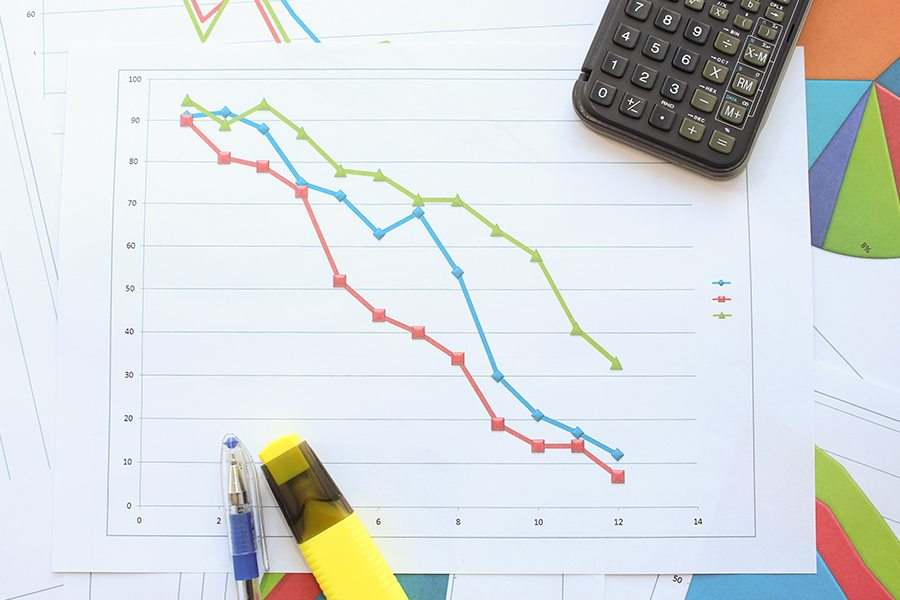There is no definitive way or mathematical model to solve how to calculate the useful life of an asset This is the estimated period an asset is expected to generate income and be used productively by your business. , as the calculation varies depending on whether you follow IRS tax regulations or GAAP guidelines. As such, I’ll go over how to determine the useful life of an asset for two purposes: tax depreciation and financial reporting.
Purpose | Tax depreciation | Financial reporting |
|---|---|---|
Who determines useful life | IRS (based on prescribed class lives in Publication 946) |
|
Analogy | Think of calculating an asset’s useful life like setting the timer on a microwave versus a slow cooker. | |
IRS tax rules (microwave): The IRS tells you exactly how long to set the timer. Just follow Publication 946, Appendix B, and your asset “cooks” (depreciates) at a set rate. It's simple, as there's no guesswork involved. | GAAP accounting (slow cooker): GAAP gives you flexibility, like choosing how long to slow cook based on ingredients (asset type), temperature (usage), and how long you want it to last. It’s based on your judgment. | |
So, to keep things simple, I recommend using the IRS’s preset “microwave timer” since it's predictable. Plus, if you use the same depreciation method for tax and books, everything stays aligned. | ||
Salvage value considered | No | Yes |
Updates to useful life | Rarely changed | Reviewed periodically; changed as needed |
Depreciation method |
| Straight line, double declining balance, or units of production |
1. IRS regulations for tax depreciation
For tax depreciation, the IRS requires you to follow specific asset lives under MACRS. This ensures that your business claims the right tax deductions and avoids penalties or audit issues.
Unlike GAAP, which I cover in the next section, IRS guidelines are not a matter of judgment. The IRS has a set number of “burning years” for each asset, like birthday candles on a cake. Some candles (such as farm buildings) burn slowly over 20 years, while others (like tractors) melt away in just three years.
IRS Publication 946 (How To Depreciate Property) publishes class lives and assigns recovery periods to assets, such as
- 3 years: Certain special-use assets (e.g., qualified rent-to-own property
Per the IRS, this is held by a rent-to-own dealer for purposes of being subject to a rent-to-own contract. It is tangible personal property generally used in the home for personal use. It includes computers and peripheral equipment, televisions, videocassette recorders, stereos, camcorders, appliances, furniture, washing machines and dryers, refrigerators, and other similar consumer durable property.
and tractors) - 5 years: Computers, office machinery, and vehicles
- 7 years: Office furniture and fixtures and used agricultural machinery and equipment Placed in service after 2017
- 10 years: Single-purpose agri or horticultural structure and trees or vine-bearing fruits or nuts
- 15 years: Land improvements (e.g., fences and roads) and qualified improvement property Placed in service after 2017
- 20 years: Farm buildings and municipal sewers that are not 25-year properties
2. GAAP guidelines for financial reporting
A theater’s popcorn machine pops kernels nonstop, but eventually, it won’t work as well. GAAP in accounting helps you decide whether it will last five, 10, or 15 years based on usage, not just IRS’s prescribed class lives.
Given, you must make reasonable estimates based on factors that affect useful life and then review them periodically. To provide an authoritative basis on how to determine the useful life of an asset, I’ll borrow major factors listed in ASC 350 This is the accounting standard for intangible assets, specifically covering goodwill and other intangibles. This standard provides the factors for determining the useful life of an intangible asset, which can also be applied to tangible assets. .
Expected usage | How long you intend to use the asset, or what your intended use for the asset is |
Legal, regulatory, or contractual provisions | How long an asset remains useful based on your lease agreements or any government regulations that restrict its use |
Historical experience | How long you can use a new asset based on patterns of past similar assets |
Level of maintenance | How long you can keep an asset functional given the quality of care and servicing performed throughout its operational life |
Other factors | How long an asset remains practical and profitable based on economic factors, obsolescence, and competition |
Output and purpose are two applications for determining an asset’s expected usage as a basis for useful life.
Three types of provisions impact an asset’s useful life.
Analyzing a past asset’s data enables you to estimate how long a new similar asset is likely to remain in service before it becomes obsolete and requires replacement or becomes inefficient and needs an update.
- Industry benchmarks: Review standard asset life expectancies based on industry norms.
- Company-specific data: See historical records of similar past assets, including depreciation schedules and retirement trends.
- Maintenance and repair history: Estimate longevity based on the patterns of a past asset, e.g., frequent repairs toward the end of life.
- Technological changes: Inform future useful life based on a past asset having become inefficient or obsolete due to tech advancements.
- Regulatory changes: Consider whether a past asset had to be retired due to law changes or compliance requirements.
Take a construction company assessing the useful life of its backhoe as a sample. It may check historical experience by reviewing records of past backhoes it has owned. If similar models lasted about 10 years before needing replacement, the business might estimate a 10-year useful life for the new equipment — adjusting for factors like tech improvements or expected usage intensity.
Your business may justify a longer useful life if an asset is well-maintained. Poor maintenance can lead to impairment losses or early write-offs.
High maintenance | Moderate maintenance | Low maintenance | |
|---|---|---|---|
Maintenance strategy | Proactive and preventive | Reactive | Run-to-failure or breakdown |
Effect on useful life | Extends | Maintains a standard but does not extend | Shortens |
Examples |
|
|
|
Results |
|
|
|
Economic conditions, obsolescence, and competition influence how long an asset remains productive and valuable. Understanding these factors will help you estimate depreciation and make strategic decisions about your company’s asset purchases and replacements.
Under GAAP, you must allocate an asset’s cost over its useful life using varied depreciation methods.
- Straight line depreciation: Spreads the cost evenly over the asset’s useful life.
- Double declining balance depreciation: Accelerates depreciation in earlier years.
- Units of production depreciation: Bases depreciation on asset usage (e.g., machine hours).
This ensures that your business produces accurate financial statements, which prevents overstatement of profits or understatement of expenses. It also helps your stakeholders, investors, and creditors assess your company’s true financial position.
Tools for monitoring useful life
There are calculators and software that enable your business to predict and track useful life and asset depreciation.
My recommendation | What it does | Learn more | |
|---|---|---|---|
MACRS depreciation calculators | Fit Small Business | Shows the deductible amount for each year of the asset’s life, as well as MACRS depreciation tables and how to use them | |
Good Calculators | Creates a depreciation schedule showing the percentage rate, expense for the year, and accumulated depreciation | ||
Cloud accounting software | Xero | Has a fixed asset manager to track purchases and apply depreciation methods | |
QuickBooks Online | Offers fixed asset tracking and depreciation calculation tools | ||
SAP Business One | Integrates asset management with depreciation tracking | See our best accounting software for small manufacturing businesses (both tools made the list) | |
Dynamics 365 | Features real-time depreciation calculations for various asset types |
Best practices for extending useful life
Extending an asset’s useful life allows your business to reduce costs, improve efficiency, and maximize ROI. Here are a few key strategies to prolong an asset’s useful life.
✅ Optimize asset usage.
- Avoid using assets beyond recommended limits.
- Use software to track usage (e.g., accounting or asset management software).
- Rotate assets to prevent excessive wear on one asset, if possible.
✅ Monitor asset lifecycles.
- Use asset management software to track usage and flag potential issues.
- Keep detailed logs of maintenance, repairs, and performance.
- Set reminders for routine maintenance to prevent negligence.
✅ Control environmental factors.
- Implement proper storage and cleaning procedures.
- Protect equipment from harsh temperatures and dust.
- Store assets in climate-controlled environments if necessary.
✅ Conduct regular maintenance and inspections.
- Follow manufacturer-recommended maintenance (e.g., inspection schedules and software updates).
- Perform preventive maintenance to detect and fix minor issues before they become costly.
- Use predictive maintenance when able (e.g., tools that analyze wear and tear).
✅ Use quality parts and repair services.
- Invest in genuine parts instead of using alternatives that wear out faster; high-quality aftermarket parts from reputable suppliers is a cost-effective solution.
- Partner with certified or experienced repair techs instead of going with cheaper but low quality fixes.
- Verify warranties and return policies when purchasing replacement parts or signing up for repair services.
✅ Establish guidelines and conduct proper training.
- Ensure operational guidelines reduce misuse and wear.
- Train employees on using equipment, vehicles, and technology.
- Track who is using assets and how they are maintained.
✅ Upgrade and retrofit as needed.
- Implement modernization strategies, such as adding automation to existing assets.
- Retrofit old assets with new parts or technology instead of entirely replacing them.
- Upgrade software and firmware for tech assets.
Frequently asked questions (FAQs)
There is no quantitative way to calculate the useful life of assets, as useful life is determined by referring to the IRS guidelines on useful lives or making estimates. However, for output-based assets, the calculation of useful life can be computed by dividing estimated production throughout an asset’s life by estimated annual production.
The easiest way to determine the economic or useful life of an asset is to refer to IRS Publication 946 because it shows the useful life of each property type. This is required for tax purposes and is also good for small businesses that aren’t required to follow GAAP.
You can calculate an asset’s RUL in a few ways.
- Basic formula: RUL = Total Useful Life − Elapsed Life; where “total useful life” is the expected useful life and “elapsed life” is the time the asset has been in use.
- Depreciation methods such as straight line and double declining balance.
- Condition estimation based on wear and tear, maintenance history, operational efficiency trends, and failure rate analysis.
- Industry norms and manufacturer guides that indicate specific expected lifespans based on usage and certain conditions.
- Machine learning, like predictive analytics and IoT sensors, can calculate RUL given real-time asset performance data.
You can determine an asset’s useful life in ASC 350 by considering an asset’s expected usage, physical deterioration, technical and commercial obsolescence, legal or contractual limits, and maintenance and repairs.
Bottom line
Your small business can either use the IRS’s tax lives or the factors mentioned in ASC 350, but for practicality, I recommend using tax lives. Knowing how to determine the useful life of an asset is essential for financial reporting, tax compliance, and business decision-making. Apart from IRS and GAAP compliance, determining an asset’s useful life enables you to:
✅Budget better, e.g., predict costs for asset repair or replacement and know when an asset will need replacement or repair
✅Make informed decisions, e.g., assess whether leasing or purchasing an asset is more cost-effective
✅Increase your odds of getting approved for financing, e.g., use useful life to determine an asset’s resale value or suitability as loan collateral


